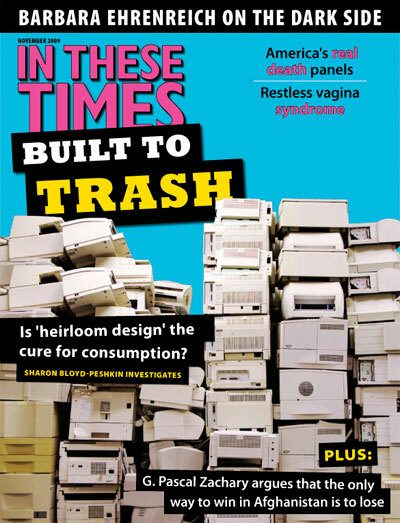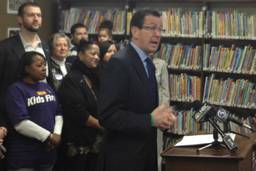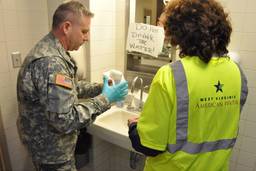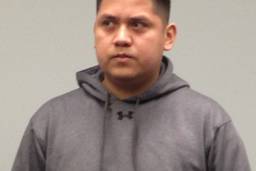
A mother from suburban Hartford, Conn., had a life-saving drug on hand when she truly needed it. One evening last spring, she found her son, who had recently returned from an addiction treatment pro-gram, unconscious in his bedroom. He had relapsed and overdosed on heroin.
“He was not breathing, and he was gray,” says the woman, who requests anonymity to protect her son’s privacy. “That’s when I called 911 and went running around the house trying to find my Narcan. We gave him two injections to get him breathing again before the ambulance got to our house.”
Narcan is the trade name for naloxone, a drug that’s been used by emergency medical personnel for decades to reverse accidental drug overdoses from opioids, including heroin, methadone and prescription pain medications like oxycodones. This mother had received her supply through a Connecticut program that trains individuals to administer it in their home. A physician involved in the program says the drug is so safe that if it’s given to a person who’s not overdosing on an opioid, it will have no effect – so it has no street value.
In June, Rep. Donna F. Edwards (D-Md.) introduced the Drug Overdose Reduction Act in 2009. It would provide cities, states and community-based groups with $27 million in annual grants to prevent and reduce drug overdose deaths. The bill emphasizes naloxone distribution, and calls for tracking overdose deaths and developing a national strategy to address the problem.
“I introduced the [legislation] because overdose is the second leading cause of accidental death in the United States,” Edwards said in an e-mail, “and the number of overdose deaths continues to rise.” So far her bill has attracted nine co-sponsors.
Increasing the availability of naloxone is an example of what is known as “harm reduction,” a public health approach to social ills like substance abuse and sexually transmitted diseases. Harm reduction initiatives include having “designated drivers” for drinkers and needle exchanges for IV drug users.
Robert Heimer, a researcher at the Yale School of Public Health, says it’s important to recognize that harm reduction includes motorists wearing seat belts and bicyclists wearing helmets. Heimer says a harm reduction approach should be used with people from all social strata, not just marginalized groups like drug users. Their pariah status has led to the implemation of policies that have resulted in increased deaths. For example, the failure to fund clean needle programs increases the likelihood that many addicts will re-use needles contaminated with HIV, the virus that causes AIDS.
Heimer worked on a seminal study that began in 1990, when the state of Connecticut allowed a needle exchange pilot program to be created in New Haven. “By the middle of the 1980s, syringe-borne HIV far outstripped sexual transmission in the state,” he said. “It was 70 percent of the cases in New Haven.”
After a year of providing clean needles in exchange for addicts’ contaminated ones, Heimer and his colleagues estimated the HIV infection rate from dirty needles had fallen by 40 percent. “The program was so successful that the evidence persuaded the state to expand the number of programs and allow limited, over-the-counter sale of syringes – up to the discretion of the pharmacist,” he said.
Fast forward 20 years, and only two states – Delaware and New Jersey – still outlaw the sale of syringes without a prescription. Pennsylvania changed its law to allow such sales only last month. (Yet even now, after such success, Heimer says only 30 percent of pharmacists in Connecticut are willing to sell syringes to individuals who would use them to practice their drug habit more safely.)
While selected cities and states were developing life-saving programs like New Haven’s, the federal government – under every president since the rise of AIDS in the 1980s – has refused to ask Congress to fund needle exchanges. That may be changing under President Barack Obama.
On March 11, Vice President Joe Biden spoke out in favor of a new approach. “With … far too many suffering from addiction here at home, never has it been more important to have a national drug control strategy guided by sound principles of public safety and public health,” he said as he announced his nomination of Gil Kerlikowske to head of the Office of National Drug Control Policy (ONDCP).
Drug Czar Kerlikowske is a former Seattle police chief who favored harm reduction strategies during his tenure as that city’s top cop. He was confirmed in May.
Kerlikowske presided over the release of the latest annual National Survey on Drug Use and Health, which reported that use of both illicit drugs and abuse of prescription drugs by teens is down significantly since 2002 – with a couple exceptions: “For individuals aged 12 or older, non-medical use of painkillers continues to be an area of concern, with more recent initiates (2.18 million) than all illicit drugs except for marijuana.”
Rush Limbaugh’s drug of choice
The most popular prescription painkillers are opioids like oxycodone (aka Oxycontin). Increased use by teens and young adults has led to a rash of overdoses, many of them fatal because the drugs restrict breathing. In 2006 alone, 703,700 Americans overdosed from prescription drugs.
New data from researchers at the Yale School of Public Health show that more than three-quarters of the 2,900 people who died in Connecticut from accidental drug overdoses between 1997 and 2007 had opioids in their system. Their lives might have been saved by a Narcan injection.
The researchers also discovered that, while overdoses from heroin caused more deaths than overdoses from opioid prescription drugs, the death toll from legally prescribed drugs is rising.
Recent efforts in several cities to get naloxone into the hands of those most likely to need it – friends and family members of drug users – have saved the lives of hundreds of people. The drug is the harm reduction star of this decade.
Mark Kinzly, a trainer for the New York City-based National Harm Reduction Coalition, says opioid addiction has changed. “We always had that mindset of the guy who’s strung out in the street with the needle sticking out of his arm,” says Kinzly, who does trainings around the country on using naloxone to reverse overdoses “The reality of it is that the fastest growing population is white, middle-class kids who are now finding opiates very, very, very attractive.”
The Chicago Recovery Alliance began training people to use naloxone in 2001, and through August 2009 had collected more than 1,290 self-reports of lay reversals from a group of nearly 12,000 people injecting drugs. From a high in Cook County, Ill., of 465 heroin-related deaths in 2000, data from Chicago’s county medical examiner’s office showed a 34 percent drop through 2007.
Kinzly knows the power of Narcan from personal experience. He said after kicking heroin for 11 years, in 2004 he had a relapse. He overdosed and stopped breathing – but a friend who had done trainings with him injected Narcan and saved his life.
Despite these success stories, critics oppose harm reduction efforts. They maintain that such programs – like providing condoms to stem the transmission of HIV or clean needles – promote risky, indeed immoral, behavior.
Bertha Madras, Deputy Director for Demand Reduction under President George W. Bush, says she fears that harm reduction efforts that make naloxone more available will make drug users more confident that they can be revived, leading to more drug use and more overdoses.
After all, there’s nothing like a little death to put a stop to bad behavior.









